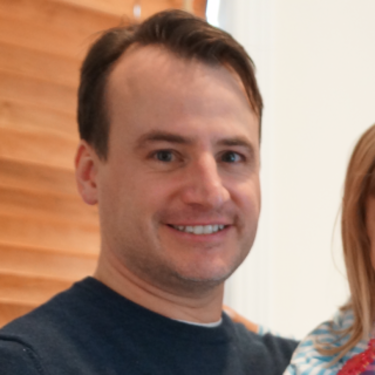When I moved to Westchester County in 2016 to start my first job, my practice owner insisted I join a local society of ophthalmologists to become acquainted with other physicians in the area and establish potential referral sources. The head of the society, who had been running his own practice for many years, had recently sold his practice to my boss and was reducing his work schedule to a few days a week. Like him, the majority of physicians in the society were also practice owners. A few of them were juggling academic responsibilities, while the remainder were employed by larger, physician-owned multi-specialty groups. I was struck by the fact that the majority of the small group practices were owned by older physicians who were either considering or nearing retirement. Many of these practices did not employ younger physicians poised to take over the mantle.
The cocktail conversations at the meetings often touched on the business side of medicine, with small practice owners complaining about declining reimbursements, increasing patient volume and demands, arduous EMR charting requirements, and the difficulty of hiring both administrative staff and younger physicians interested in assuming partnership roles. For many of these older physicians, an obvious exit strategy was elusive, as younger physicians entering the workforce sought the stability of guaranteed salaries, reduced call burdens, and better work-life balance.
During the intervening years, when I left my original practice to take an academic position and then reengaged with the local ophthalmology society as a solo practice owner, I discovered that more than half of the small group practice doctors I had met had since sold their practices to private equity firms. Of the three locally developed, large, multispecialty, physician-owned groups, two were sold to Optum, a subsidiary of UnitedHealthcare, and one was acquired by private equity and subsequently sold again, with a third potential acquisition on the horizon.
Initially, the small group practice owners who sold to private equity were hopeful, enticed by the siren song of large buy-outs and reduced administrative burdens once the firms assumed responsibility for the back office aspects of the practices.
Like any small business owner, these physicians were tired of managing human resources issues while also caring for patients, so the idea of becoming an employee was appealing, particularly in the later stages of their careers. As part of the acquisitions of their practices, these older physicians were required to remain employed for anywhere from three to five years to ensure the smooth transition of their patients to the larger entity and were asked to sign restrictive covenants.
Soon thereafter, the dinner meetings were peppered with complaints from these physicians about witnessing the mismanagement of their practices. They listened to disgruntled patients relating issues with the phone trees, feeling like they were being shuttled through a factory. Older physicians who had enjoyed the autonomy of setting their own schedules in private practice were now being mandated to work evening hours and weekends, in addition to attending after hours company meetings on strategy and compliance. Many of them were aghast at the emails they received from corporate leaders commending the excellent quarterly returns and congratulating the practices on their profitability, while being told during private meetings that they were not seeing enough patients compared to national averages and being encouraged to increase their patient bookings.
Despite observing the growing discontent among physicians and patients in my community as a result of these acquisitions, I continue to witness the consolidation of local practices into larger groups. Practice owners who are looking to retire or are experiencing burnout do not perceive another viable option that would allow them to receive outgoing compensation for having built a successful practice with a loyal patient population over the course of several decades. What I have seen happen in a short time span appears reflective of a growing national trend.
As of 2024, over 77% of physicians are employed, and perhaps even more shockingly, approximately 6.5% are employed by private equity groups, and 10% are either affiliated with or employed by Optum Healthcare. Studies have shown that these groups typically contribute to increased patient care costs. Meanwhile, insurance companies continue to raise premiums and deductibles.
While these changes are disheartening and have been accompanied by considerable handwringing among patients, physicians, and government representatives alike, I believe there may be a silver lining in the current climate. Another type of practice, concierge medicine, has been rising slowly nationwide. The introduction of managed health plans in the 1970s and the resulting shift in the practice of medicine led to a loss of physician autonomy as mistrust of physicians grew. However, it seems the tide has begun to change, as patients are realizing that the true recipient of their frustrations should be the private equity groups, hospital systems, and insurance companies rather than the physicians.
As insurance companies cover fewer and fewer treatments, patients find themselves spending more and more out of pocket. As a result, the idea of concierge medicine will continue to gain popularity, and we may begin to witness a return to pre-insurance direct patient care models. For better or for worse, I believe we are entering a true two-tier system wherein those who can afford to step outside of insurance companies and universal health care options will pivot toward what they perceive as greater, faster access and care from smaller boutique practices.
In my community, I have already witnessed an increase in the number of concierge practices, including primary care services and subspecialty services such as gynecology and endocrinology. Those with the means to afford more personalized care are happy to pay because it means direct access to their physicians rather than getting lost in a phone tree. For my surgical patients who require medical clearance, those with concierge offices can simply call or email their PCP’s office to schedule a quick appointment or have their completed paperwork faxed over within one business day. Unfortunately, those who are unable to afford such benefits often have to wait months for appointments in larger private equity-owned practices or academic centers, and may have to travel to different geographic areas in order to identify physicians and practices that accept their insurance plans.
Those who are plugged into the large private-equity or insurance-backed multi-specialty groups, on the other hand, will struggle to reach their particular doctor’s office. Between my office staff and the patient, this necessitates multiple calls to receive the necessary documentation for clearance.
I believe that the lack of adequate options for older, small group, or solo physicians seeking retirement will mean a continual increase in the consolidation of patient care into large private equity firms and hospital systems, just as it has in my practice community. Patients will face a growing set of challenges, including impersonalized automated phone systems, overbooked appointments, having to see midlevels instead of physicians, and navigating administrative mazes to deal with billing errors. These roadblocks will alert an increasing number of patients to the value of the services we provide and pave the way for the growth of concierge practices, at least for those who can afford them. Perhaps in due time, we can find the antidote to physician burnout by eliminating the middlemen and returning to the direct patient care model we once had.
How have you seen private equity buy-outs affect your medical community? Share in the comments.
Dr. Mahsa Sohrab is an oculoplastic surgeon located in Greenwich, CT. When she is not busy managing her own practice, she enjoys writing, sewing, reading, and globetrotting with her husband and daughter. Follow her on Instagram @drmahsasohrab. Dr. Sohrab was a 2024–2025 Doximity Op-Med Fellow.
Illustration by April Brust






